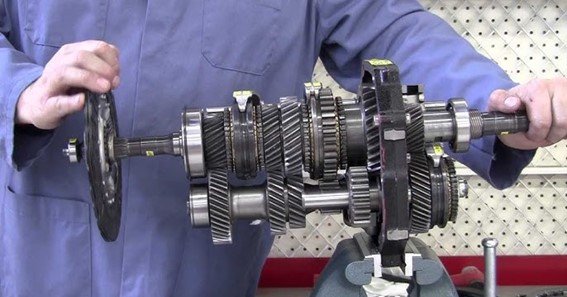The clutch on a 1950 3-speed manual transmission plays a crucial role in ensuring smooth gear shifts and efficient power transfer. Over time, the clutch may require adjustments to maintain proper engagement and prevent issues like slipping or difficulty shifting gears. Here’s a guide on how to adjust the clutch for this classic vehicle setup.
Step-by-Step Clutch Adjustment Process
- Locate the Clutch Linkage
The first step is to locate the clutch linkage, typically found between the clutch pedal and the clutch fork. Depending on the vehicle model, the linkage may include a threaded rod and adjuster. - Measure Pedal Freeplay
Freeplay refers to the distance the clutch pedal moves before the clutch engages. For a 1950 model, the freeplay should generally be about 1 inch. This helps ensure that the clutch is fully disengaged when the pedal is pressed. - Adjust the Clutch Rod
Loosen the locknut on the clutch rod. Turn the adjustment rod to increase or decrease the freeplay until it reaches the desired setting. Once adjusted, tighten the locknut to secure the setting. - Check the Clutch Release Point
After adjusting, press the clutch pedal several times to ensure the clutch engages and disengages smoothly. If the clutch feels stiff or does not disengage fully, additional adjustments may be needed. - Test Drive the Vehicle
Take the car for a test drive to check how the clutch performs. Ensure that there are no issues with gear shifts, and that the clutch does not slip under acceleration.
FAQ
1. What is clutch freeplay and why is it important?
Freeplay is the distance the clutch pedal moves before the clutch starts to engage. Proper freeplay ensures that the clutch fully disengages, preventing damage to the transmission.
2. How much freeplay should a 1950 3-speed clutch have?
Typically, you want about 1 inch of freeplay at the clutch pedal for smooth operation.
3. Can I adjust the clutch without removing the transmission?
Yes, the clutch can be adjusted via the external linkage without removing the transmission. Most adjustments are made through the clutch rod.
4. What tools are needed for clutch adjustment?
You will need basic tools such as wrenches to adjust the clutch linkage and check for proper freeplay.
5. What are the signs that my clutch needs adjustment?
Signs include slipping clutch, difficulty shifting gears, or the clutch pedal engaging too high or too low. If you notice any of these, it’s time to check the clutch freeplay.










